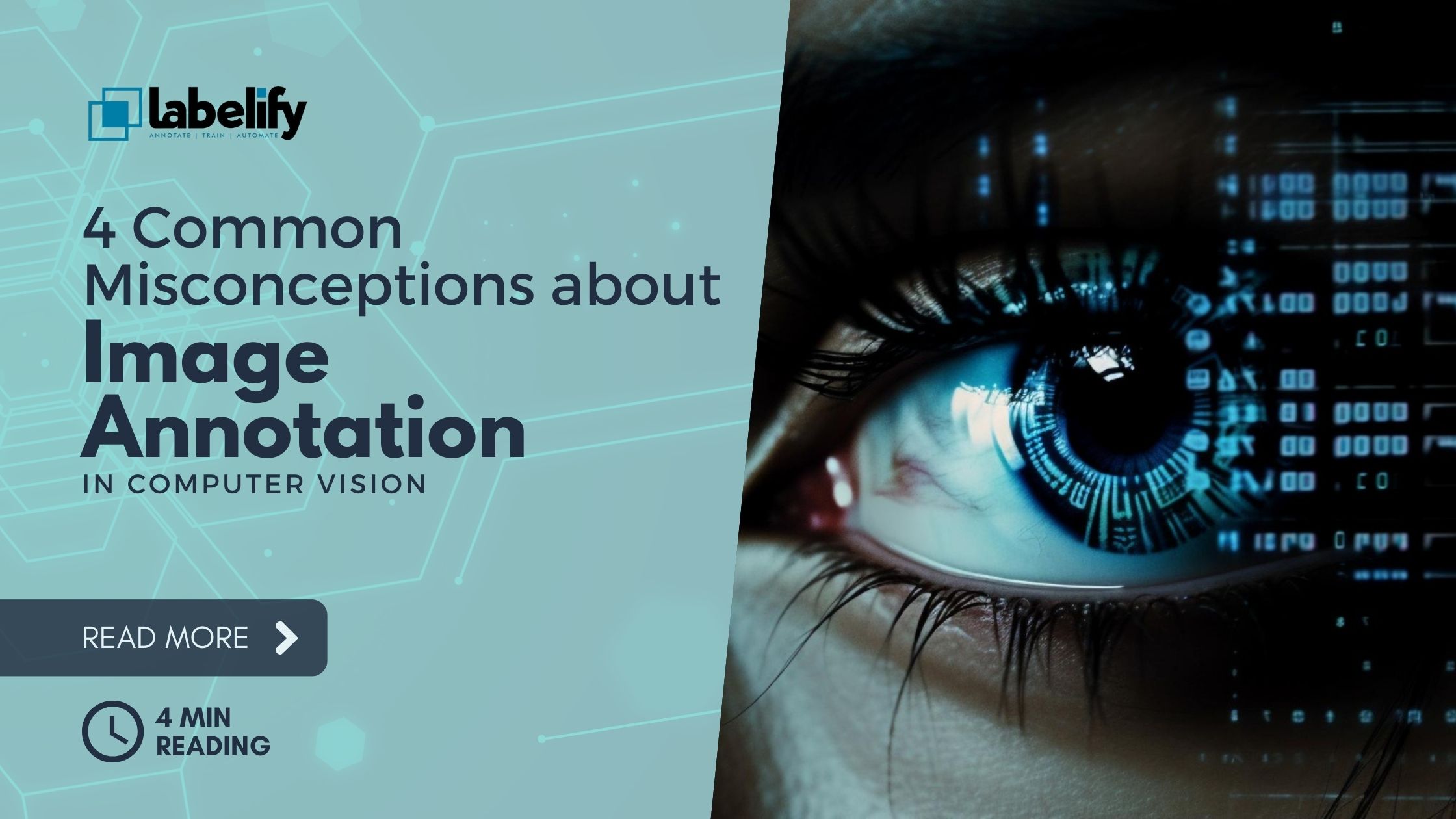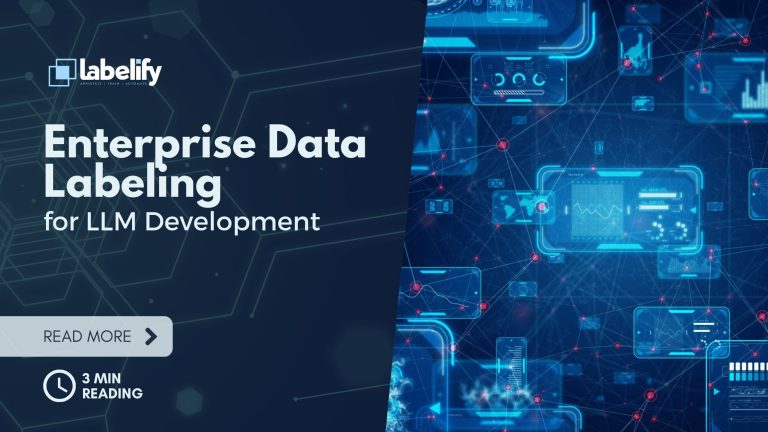Image Annotation in Computer Vision & its common Misconceptions
Computer vision teaches machines how to understand and interpret the visual world around themselves. It is one of the fastest-growing applications of artificial intelligence and is being used across many industries to solve problems.
Computer vision is a tool that aids in healthcare diagnosis. It is used to track the movements of autonomous vehicles in transportation. It verifies documents and identification cards in banking and finance. These are just some of the many ways that computer vision is changing the world.
Image annotation is essential to achieve these amazing abilities. Image annotation is a form of data labeling. It involves labeling specific parts of an image so that the AI model can understand them. This is how driverless cars can read and interpret traffic signals and lights and steer clear of pedestrians.
An adequate visual data set and enough people are required to annotate images. This will allow you to prepare the images for your AI model. Annotating images can be done using a variety of techniques, including drawing boxes around objects or using lines and polygons for demarcating target objects.
AI is a subject that has many misconceptions. Labelify provides professionally managed teams that annotate images with high accuracy to machine learning applications. This has been done over the past decade. These are some of the myths that we have dispelled in our efforts to label the data which powers AI systems.
Myth 1 – AI can annotate images just as well as humans.
Automation is rapidly improving the quality of automated image labeling tools. Pre-annotating visual data sets can help save time and money. Automation with humans involved is a great way to save time. These benefits come with a substantial price. Poorly supervised learning can lead to errors that cause the model to become less accurate over time. This is known as AI drift.
Auto labeling is faster but it lacks accuracy. Computer vision can interpret images as humans do. Therefore, image annotation requires human expertise.
Myth 2 – It doesn’t matter how far off an annotation is by a pixel.
Although it’s easy to see a single pixel in a screen as a dot, when it comes down to computer vision data, even minor errors in image annotation can have serious consequences. An example: The quality of the annotations on a medical CT scan can make a difference in diagnosing the disease. A single error during training can make all the difference in the life or death of an autonomous vehicle.
Although not all computer vision models can predict life and death, accuracy in the labeling phase is a major factor. Two problems can be caused by low-quality annotated information: one, when the model is trained and secondly, when it uses the annotation to make future predictions. You must train high-performing computer vision modelers using high-quality annotated data.
Myth 3 – It is easy to manage image annotations in-house
Image annotation might be seen as a simple, repetitive task. It doesn’t require any specialization in artificial intelligence. However, this doesn’t mean that you have to do all the work yourself. Image annotation requires access to the right tools and training. It also requires knowledge about your business rules, how to deal with edge cases and quality control. Your data scientists will also need to label the images. This can be very costly. Due to the repetitive nature of the work and the tedious nature of scaling in-house teams, it can be difficult to scale. This can lead to employee turnover. You will also have to manage the annotation team’s onboarding, training and management.
One of the most crucial decisions you’ll make is to choose the right people who will annotate your data in order to support computer vision. A managed, external team is best for annotating large volumes of data over long periods of time. It is possible to communicate directly with this team and make adjustments to your annotation process as you train and test your model.
Myth #4: Image annotation can be done at scale using crowdsourcing.
Crowdsourcing allows you to access a large group of workers simultaneously. Crowdsourcing has its limitations, making it difficult to use for annotation at scale. Crowdsourcing relies on anonymous workers. Workers’ identities change over time which makes them less accountable for quality. Crowdsourcing doesn’t allow you to take advantage of workers becoming more familiar in your domain, use case, annotation rules, and other details over time.
Crowdsourced workers have another disadvantage. This approach often uses the consensus model for quality annotations. This means that several people are assigned to the same task and the correct answer comes from the majority of workers. It is a cost-effective way to get the same task done multiple times.
Crowdsourcing may be a good option if you’re working on a single project or testing a proof-of-concept for your model. For longer-term annotation projects that are more precise, managed outsourced teams can be a better choice.
The bottom line on Image Annotation
Poorly annotated images can cause problems when used to train a computer-vision model. Annotations of poor quality can have a negative impact on your model validation and training process. Your model will also be unable to make future decisions based on the annotations it has received. You can achieve better annotation quality and ultimately better performance for your computer-vision model by working with the right workforce partner.
Find out more about image annotation in our guide Image Annotation for Computer Vision.




